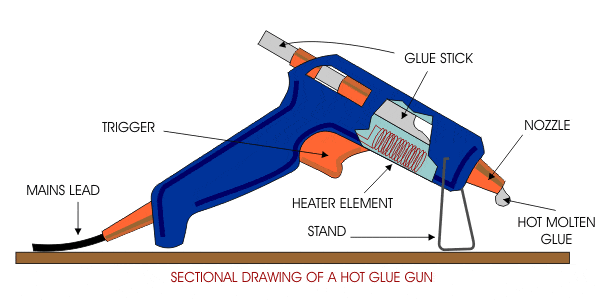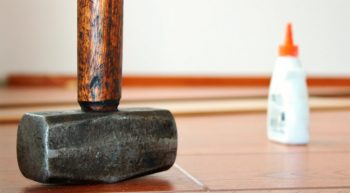Glue guns are used by many people on a variety of different projects in both a home and an industrial environment. When they were first created, they were simply made for bonding shoe soles. Today, however, people have found a wide range of uses for them such as in woodworking, recreational décor, retail manufacturing, packaging, etc.
The Hot Melts
The whole purpose of glue guns is to bond items together and, therefore, optimal results require not just any hot melt adhesive, but one that is compatible with the gun. The compatibility factor is usually based on the materials and the sizes of the hot melts as these can vary greatly.
Hot melts can be comprised of thermoplastic polymers, resins, and even waxes in various dimensions. The reason there are so many different chemical compositions is because glue guns don’t all have the same output. Some of them produce a harder glue product, while others produce one of a softer variety. Also, they vary in colors as needed for different applications.
The melts are also usually waterproof and are built to endure chemical treatments, however, they are not suitable for sustained high temperature applications because of the effect that these temperatures has on them.
How They Work
The hot melt sticks mentioned above are usually loaded into a back cavity that exists on the gun. Depending on the device model, the movement of the stick is either automated and controlled by a trigger, or manually fed.

When the gun activates, the glue moves to what is known as a check valve on the way to the melting chamber. This is simply a ball loaded spring that resides directly behind the nozzle for the purpose of preventing spills and impeding the glue flow when necessary. Many glue gun models have a transparent viewing area, which helps to determine if an adequate amount of adhesive is in the chamber.
Once the glue is in the melting chamber, the stick is melted over a two to five-minute period. This process can be cut shorter if the gun was already in use at it is then already hot. The heating process is regulated by thermistors, which allows the glue to be heated without the rest of the gun becoming hot and burning the user. The melted and usable glue is then dispensed through a metallic nozzle, which can get significantly hot. Manufacturers commonly use a rubber casing on the nozzle to prevent burns.
The glue comes out in a thin, strip like manner then hardens and dries within a few minutes after leaving the gun.





